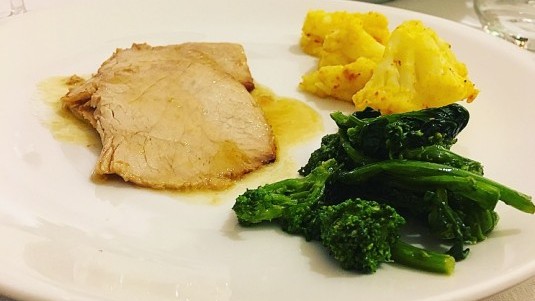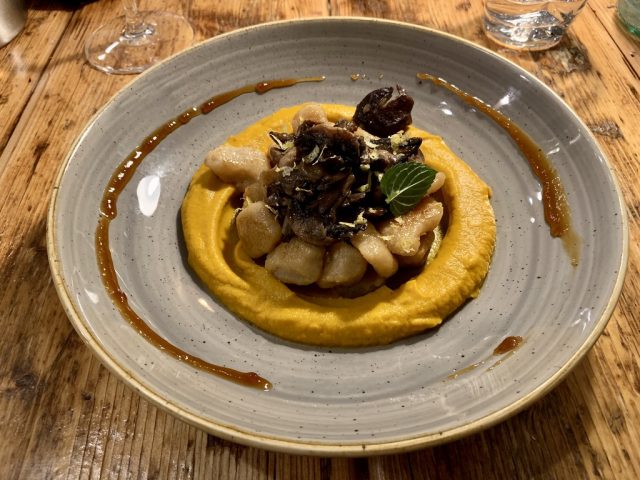Roast veal with friarielli and saffron cauliflower florets

Ingredients for 6 people:
A single, 800g veal roast tied with string, 1kg friarielli*, 500g cauliflower florets, garlic, chili pepper, salt, extra-virgin olive oil as needed, 50g saffron powder and 1 scallion.
Directions:
Brown the veal roast in hot oil (around 4 tablespoons) together with the scallion until all sides are seared and it is uniformly light brown. Place the meat in a baking pan with its juices, cover with aluminum foil and bake for 30 minutes at 180°C.
In the meantime, boil the friarielli for 5 minutes, drain and place in a bowl. Sauté chopped garlic and the chili pepper and then add the friarielli and cook at a high heat for a few minutes to allow the flavors to blend. Salt and remove from heat.
Boil the cauliflower florets with the saffron added to the water until they are ‘al dente’. Place aside.
Once the roast is done, let it sit a few minutes before slicing the meat and serving it on a plate with the friarielli and cauliflower florets
*Friarielli are broccoli rabe or rapini that grow during the winter in the areas around Caserta and Nocera. They are used in various recipes of Campania cuisine from the classic fried with garlic and red pepper to timballo baked pasta or on pizza. The most famous dish, however, is friarielli and sausage. The traditional way of cooking them is to thrown them in hot oil as soon as they’ve been washed in order to maintain their typical bitter aftertaste. If you do not want this characteristic you can boil them quickly in water.
Wine to pair:
Vecchie Vigne Casal di Serra Verdicchio dei Castelli di Jesi Doc Classico Superiore Umani Ronchi
Production area: Montecarotto farm in Castelli di Jesi. The vineyards, at about 300 meters above sea level, on a hillside facing east/south‐east, are more than thirty years old and trained on the doppio capovolto system. The soil is very deep, clay loam, fairly fresh, and represents the ideal for a vine such as Verdicchio.
Grape variety: Verdicchio 100%. The yield per hectare is between 6 and 7 tons.
Wine making system: The grapes are picked by hand, and collected in boxes. The harvest takes place on the borderline between the first and second ten days in October, when the grapes have reached a perfect ripening status. After a light pressing, the prime must is rapidly cooled and then goes through static decantation. Fermentation, in steel tanks with the temperature maintained at 16-18°C, takes 10‐15 days. The wine does not undergo a malolactic fermentation, in order to preserve freshness and acidity. The ageing stage lasts about ten months, during which the wine remains in contact with its own fermentation yeasts in concrete tanks. The wine then rests in bottle for several months before being released.
Serving temperature: 12‐14°C.
Food pairing: roast white meat, roasted fish, stuffed pasta.

 Italiano
Italiano







